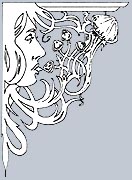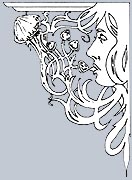![]()  
Psilocybe azurescens
(Hammond)
Spore germination
Spores from a print were
streaked out onto 2% malt agar and incubated in the dark at 25
°C. After 7 days, the healthiest looking rhizomorphic
colonies were isolated and transferred to fresh plates, also
cultured on agar slants in universal 1 oz glass bottles, for cold
storage in the fridge (5.0 °C).
.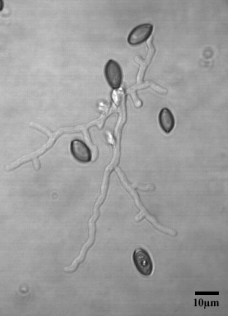
Spores germinating on agar
media
Spawn media
100ml of organic rye grain and 80ml
of tap water was put in 1 pint glass jars, with synthetic filter
discs fitted under the caps, and autoclaved for 20 minutes.
Once cooled, 1cm wedges of mycelium were cut from the agar and
transferred, 3 to each jar. Lids were replaced, and jars
incubated at 25 °C for 7 days. Each jar was shaken to disperse
the rapidly spreading mycelium, and then incubated for a further 7
days.
Bulk substrate preparation
Fully colonised
grain spawn was then used to inoculate "filter patch spawn bags"
. Each bag contained around 1 pound of mixed hardwood sawdust
and alder wood shavings/chips. Enough boiling water was
added to each bag to fully wet the substrate (approx. 5:4
substrate : water ratio). These substrate bags were left to
soak overnight then autoclaved for 20 minutes, and allowed to
cool. Around ½ pint of spawn was used to inoculate each
bag of substrate and these were left to colonise in a dark cupboard
for 2-3 weeks @ about 20 °C. An alternative method for an
attempted indoor patch was using a plastic "washing-up" basin with a
cased substrate consisting of wood shavings and wheat straw
(#1). As you can see, the fungus loves this cellulose rich
substrate.
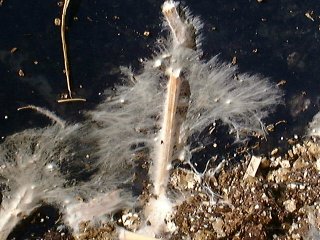
Fully colonised wood/straw
substrate
Preparation of outdoor beds
Patches were placed
in different areas of the garden, during the summer around
June-July, 1999:
#1. Under Rhododendron bushes, next to grassy lawn
#2. Under a pear tree amongst weeds/shrubbery
#3. Under an ash tree with surrounding gooseberry
bushes
#4. In rich woody soil next to a compost
heap
Each site was prepared by digging trenches about 6 inches deep,
around 2 square feet. The trenches were raked over and lined
with a thin layer of moist, well rotted leaf litter/twigs. The
colonised woody substrate was broken up and spread out (about
1 bag per patch). The spawn was then covered with another 2
inch layer of rotted leaves/twigs, and finally covered with a
thin (1 inch) layer of soil.
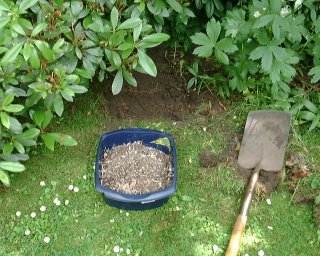
Preparation of an outdoor
patch (#1)
Establishment of beds
It has now been about 6
weeks since preparing the patches and they are all doing very
well. Rhizomorphic mycelium can be observed creeping over
leaves, and spreading out into the surrounding leaf litter which
comprises the top 2-3 inches of the soil. The weather is
cooling down now (August) and it's getting wetter.
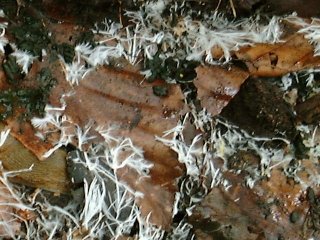
Rhizomorphic mycelium
spreading over leaf litterPests!
Watch out for slugs, which like to eat mycelium. The
best way of getting rid of them is to bait them with bread, and go
out at night with a torch and remove them (wearing gloves!). Wood
lice were also present and probably feasting on the
mycelium. The other pests are squirrels, which
discovered the grain and dug a few little holes in the patch under
the pear tree (#2), soon after preparing the beds.
Maintenance
The patches were kept well-watered,
mostly by rain, although they did encounter some dry periods, which
implemented the use of a watering can. There was a light frost
at the beginning of October, but the patches were snug under the
leaf litter.
Fruiting report
- #1 developed pinhead primordia, towards the end of
October, This was mainly in the area which had been covered
by a thin layer of moss, grass and leaves. The mossy turf
had recovered and the mycelium could be seen around the grass
roots. Over the following two weeks the
primordia grew into mushrooms. Translucent caramel caps with
whitish stems which have a very strong bluing reaction were
bruised; truly an amazing species! They seem to grow very
slowly at first, but accelerate as they got bigger.
- #2 is sparsely colonised at the surface, and not
looking very happy. Partially due to animals digging up the
grain spawn, and the soil is very clay rich with is not much wood
content. The soil might be too moist.
- #3 under the ash tree, is still looking healthy, and
there are plenty of thick rhizomorphic mycelium creeping
out., It has a 2 inch covering of leaves, and seems to be
retaining moisture well, but no sign of fruiting, yet.
- #4 also hasn't started to fruit, but the woody ground
is very well colonised. The patch was covered with a thin
layer of mossy turf: this is keeping it moist, and there is
a carpet of rhizomorphic mycelium.
The following images
show the development of primordia to "grown-up"
mushrooms.
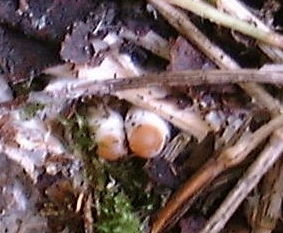
21st
October
![]()
27th October
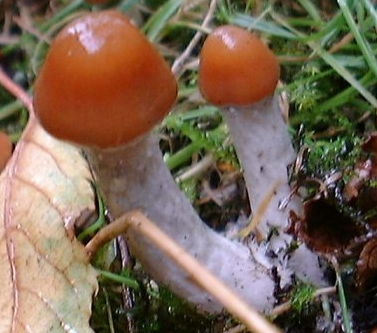
1st
November
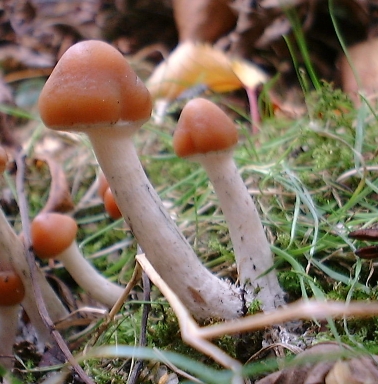
4th
November
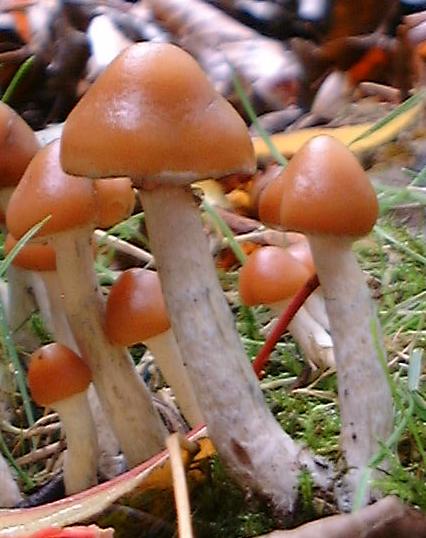
6th November
|
